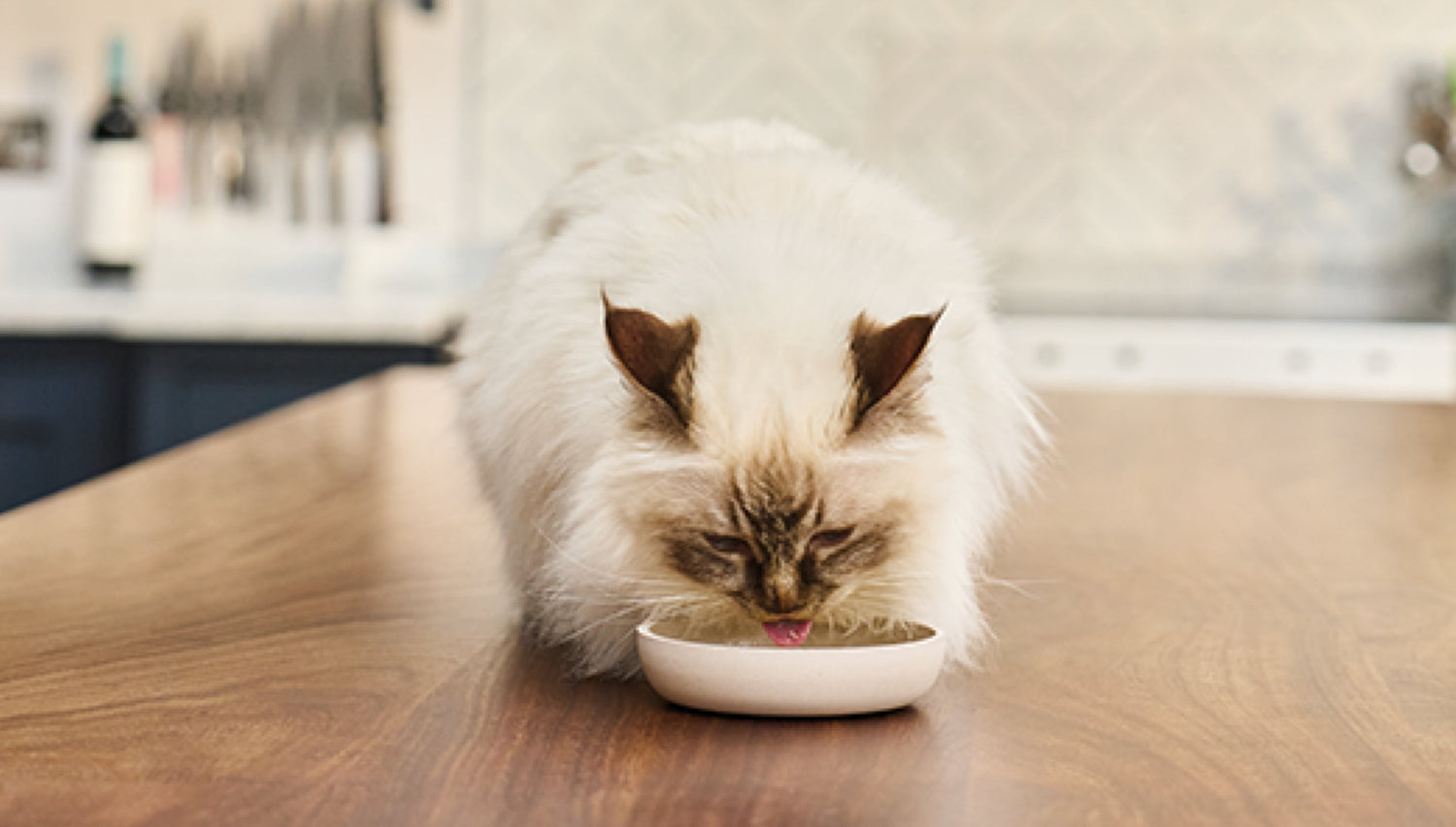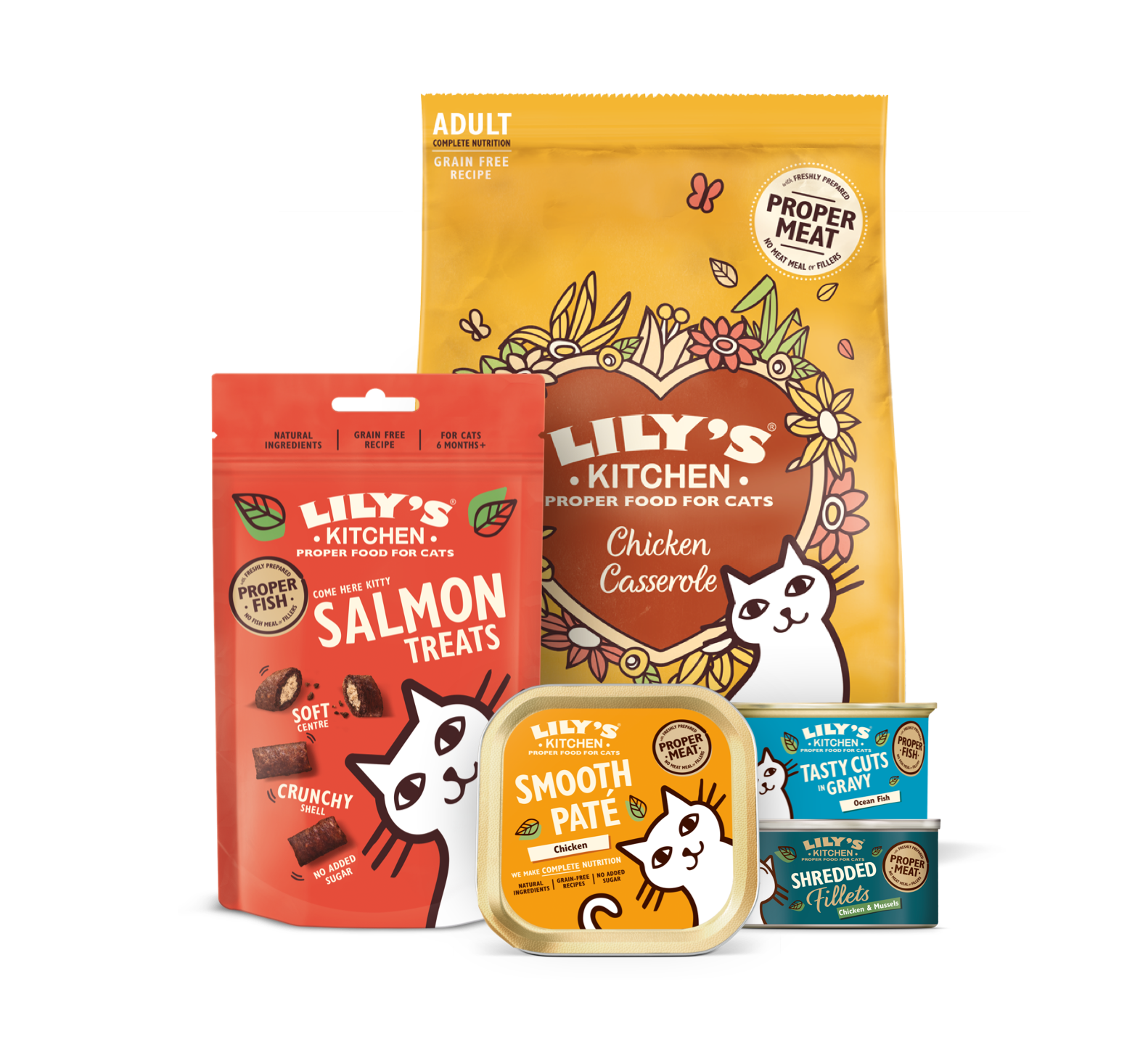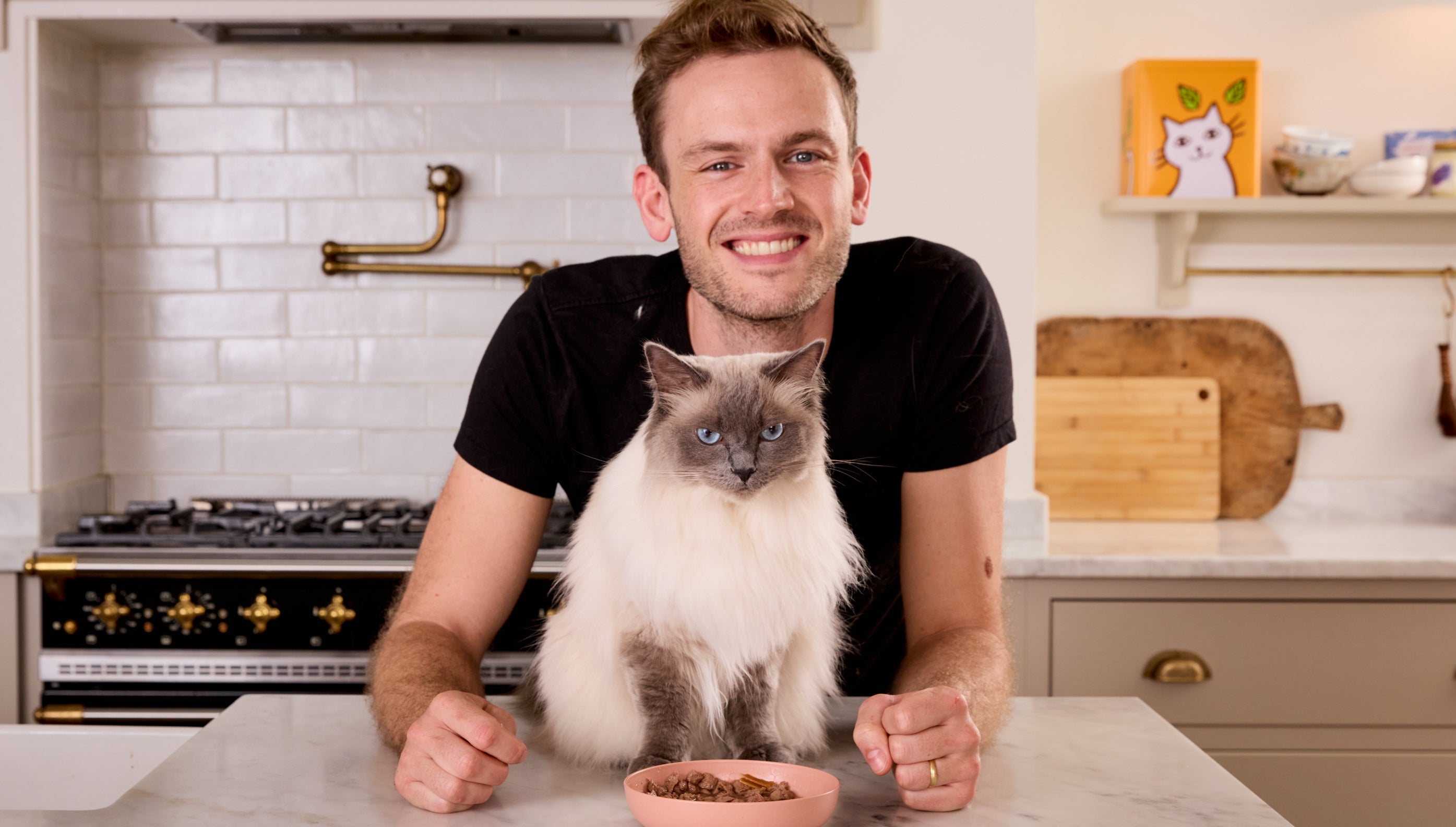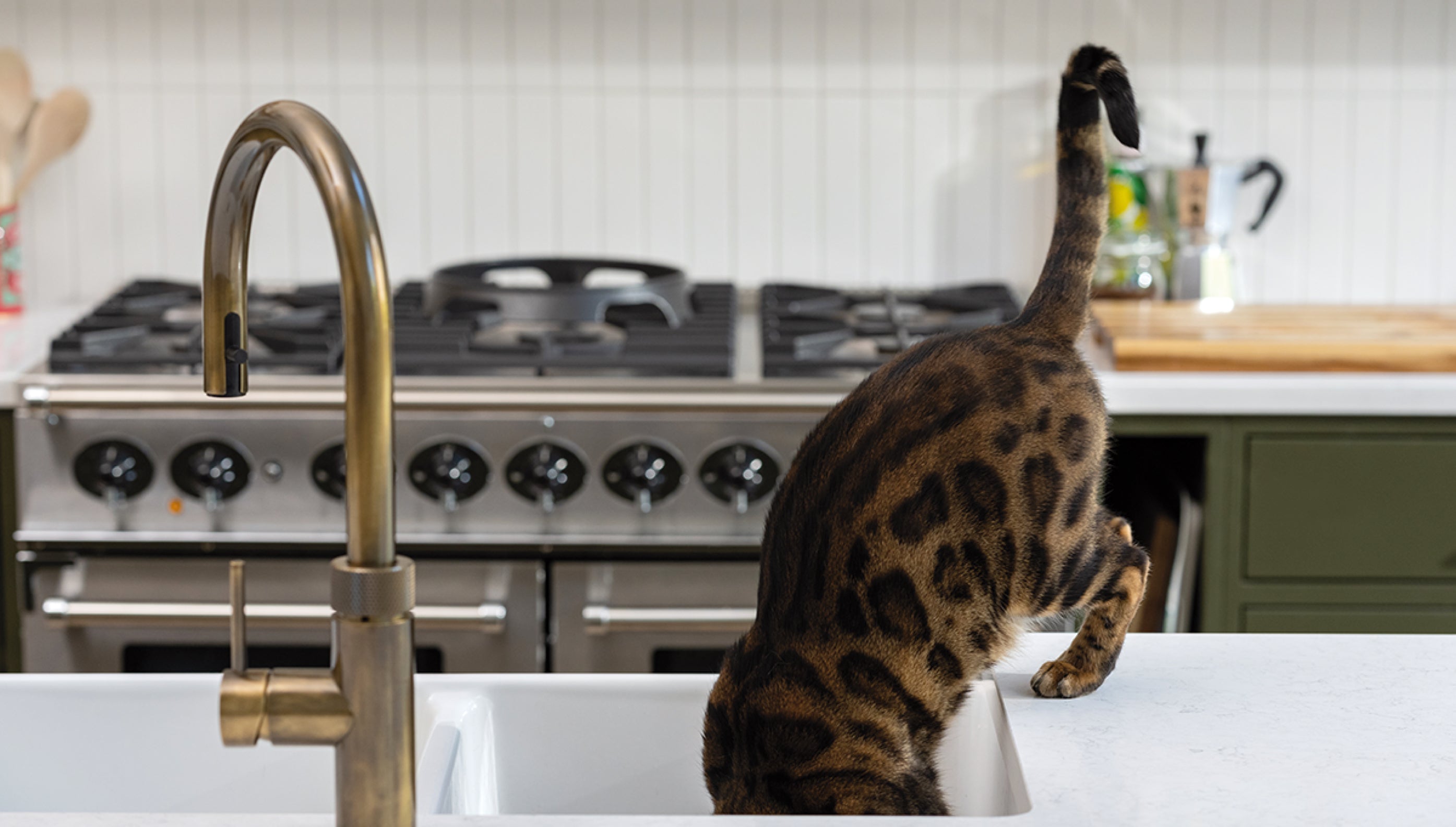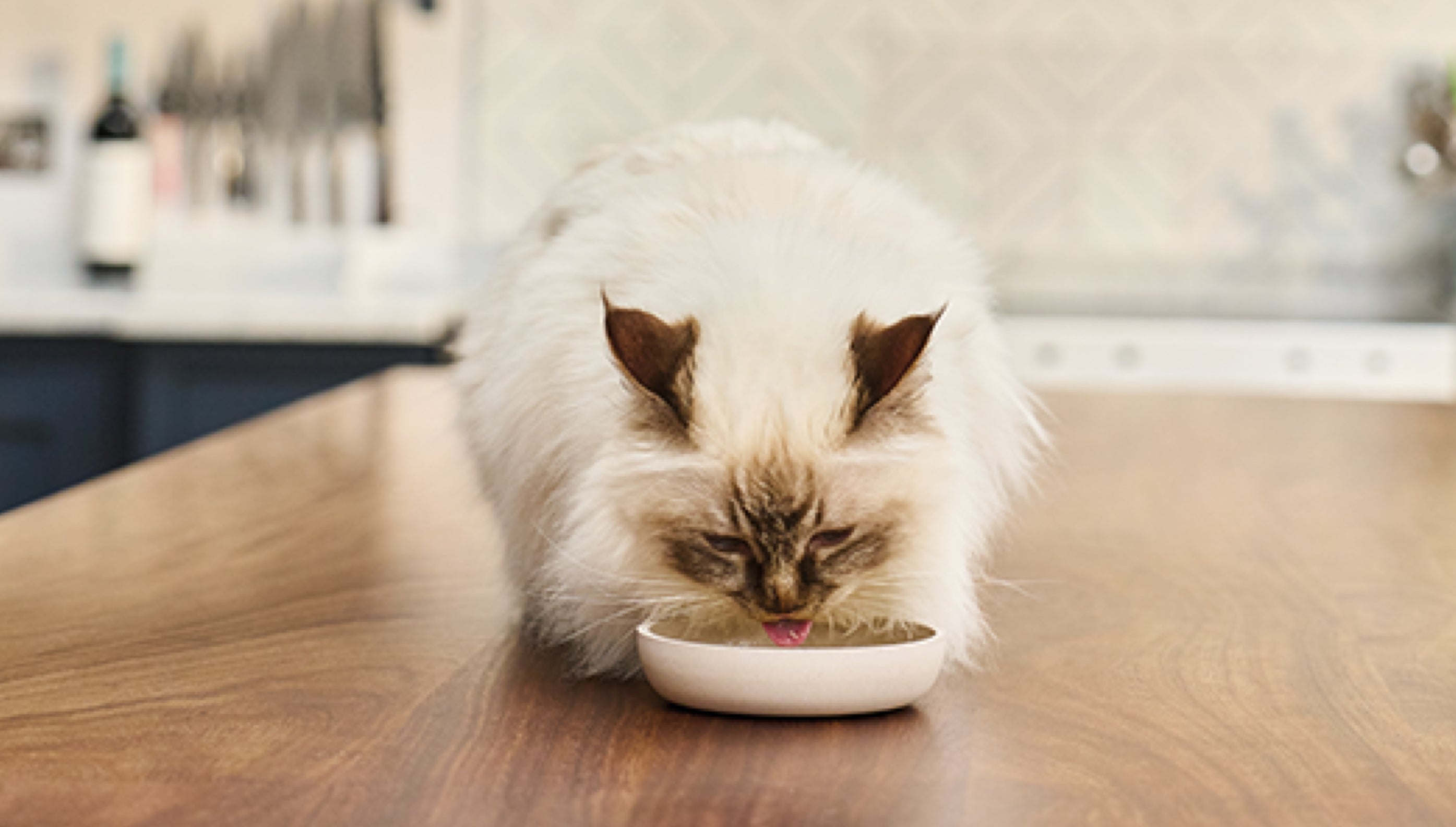Every cat needs a complete and balanced daily diet, full of goodness and proper meat, to help keep them in tip top condition and purring their little furry engines off. Here, you’ll find our top tips on feeding yours - advice on their needs, choosing the right food, tips for mealtimes and how to give your favourite feline all the nutrients they need to live a happy and healthy life. Kneading and purring to come, read on to find out how.

RORY THE VET EXPLAINS
“When it comes to cats, we all know they can be a little fussy. However, not only will they love it, but feeding Lily’s Kitchen will help stop them dining out on the wildlife buffet or going round to the neighbour’s house for a snack.”
“Cats wouldn't naturally consume carbohydrates such as rice or wheat as part of their normal diet”
LOOK FOR GRAIN FREE RECIPES
Cats wouldn't naturally consume carbohydrates such as rice or wheat as part of their normal diet. That’s because they haven't evolved to digest grains very well.
There may however be some additional carbohydrates in dry extruded cat foods, as this helps the kibble stick together - in our dry food we use ingredients such a potato starch, to ensure the perfect crunchy food, but without using added grains.
WET FOOD OR DRY?
Every feline has their own preferences when it comes to food, just like us humans. Their favourite flavours and textures can be formed in kittenhood.
At Lily’s Kitchen, we believe that the majority of a cat’s diet should be made up of wet food as it more closely replicates their natural diet.
Wet food contains more water, so it helps to keep cats - who naturally have a low thirst drive - well hydrated. This is important to help support a healthy urinary tract system, which may help support long-term kidney health.
Cats regulate their own appetite; it is common for them to graze throughout the day. We therefore recommend you feed our delicious dry food as a companion to our wet food for added crunch and variety.
“CATS PREFER TO EAT LITTLE AND OFTEN SO SERVE SEVERAL SMALLER MEALS THROUGHOUT THE DAY”
Helpful hints for happy mealtimes:
It’s not all about the food itself. The way you serve up food to your kitty can make the meal all the more enjoyable.
Serve your cat high up
…where they feel safer (and their self-proclaimed status as the most important member of the family is reaffirmed) - like on a work surface or table. Afterall, they are royalty and thus deserve to be treated as so.
Place feeding bowls in quiet locations
Cats are notoriously sensitive to loud noises. They’ll appreciate feeding in an area they won’t feel overwhelmed or threatened in.
Keep the water bowl away from the food bowl
Cats are very hygienic creatures. They like their food and water stations to be well away from each other (and well away from the litter tray too, understandably!).
Feed little and often
Like we mentioned before, our furry friends prefer to eat little and often, so serve several smaller meals throughout the day, rather than one or two larger ones.
Serve food at room temperature
…not straight from the fridge. Do so and you risk a pushed over plant pot or two in response. Your call.
Remove uneaten food
Cats have a very sensitive sense of smell, so make sure to serve food as fresh as possible and remember to remove any wet uneaten food after around half an hour of mealtimes.
MAKING CHANGES TO THEIR DIET
Always make any dietary changes gradually. Sudden changes to the diet can cause tummy upsets. If you are either switching to a different recipe or to a new food, it’s best to introduce it into your cat’s diet bit by bit over about a week. Start with a mix of 4/5 of your current food to 1/5 of the new recipe/food. Day by day, increase the proportions until you’re feeding only the intended recipe. (*Cough* Lily’s Kitchen.)

HOW TO GIVE YOUR KITTY CAT A BALANCED DIET
The food at Lily’s Kitchen is curated with the best nutrition for each stage of a cat’s development. All our recipes have a carefully balanced protein content that provides felines with a delicious and natural diet.

RORY THE VET EXPLAINS
“Did you know that cats are obligate carnivores? That means they need meat in their diet. In a recent study at Exeter University, feeding Lily’s Kitchen was linked with a 36% reduction in hunting. How cool is that?”
The information in this article is intended as a guide to help pets and pet parents on their journey together. It is provided for educational and informational purposes only and is not meant as a substitute for professional advice from a vet, behaviourist, trainer or other professional. We encourage all pet parents to consult with their vet and/or behaviourist to ensure their pet’s specific needs are met.
